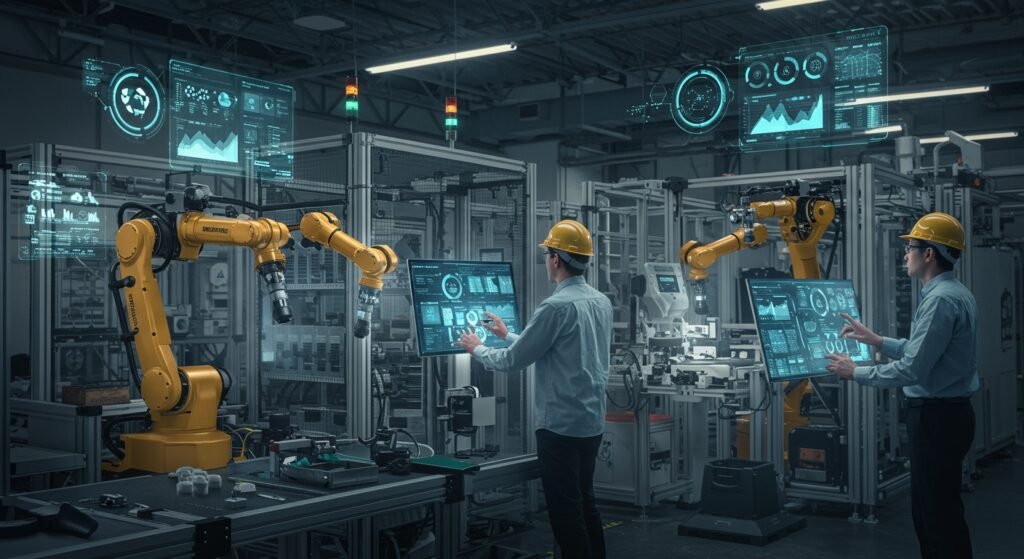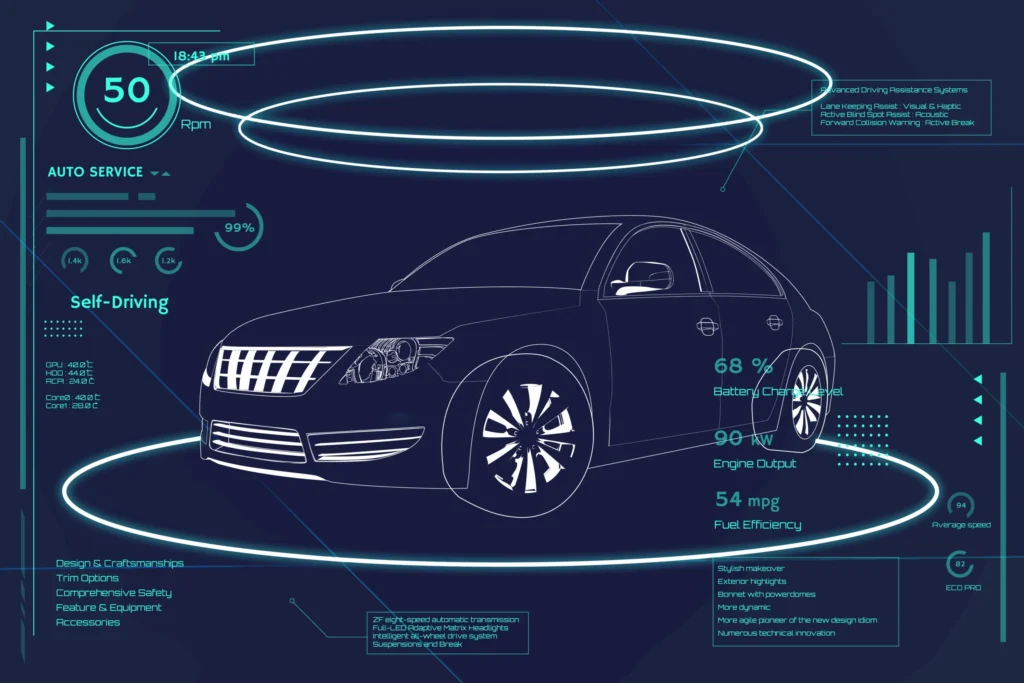The industrial revolution has seen several monumental shifts, each bringing profound changes to how we live and work. From steam power to mass production, and then to automation, humanity has consistently sought ways to optimize and improve. Now, we stand at the precipice of another transformative era: The Rise of Industry 5.0. This new paradigm goes beyond mere technological advancement, prioritizing human-centricity, sustainability, and resilience, aiming to create a symbiotic relationship between humans and machines in the workplace.
Unlike its predecessor, Industry 4.0, which focused heavily on automation and data exchange through the Internet of Things (IoT) and artificial intelligence (AI), Industry 5.0 shifts the spotlight back to the human worker. It advocates for a future where technology serves humanity, enhancing our capabilities rather than replacing them. This article will delve into the core tenets, technologies, and implications of this exciting new industrial age.
Table of Contents
- What is Industry 5.0?
- Core Principles of Industry 5.0
- Key Technologies Driving Industry 5.0
- The Human Element: Collaboration and Empowerment
- Sustainability and Resilience
- Industry 5.0 vs. Industry 4.0: A Quick Comparison
- Challenges and Opportunities
- The Future Landscape
- Conclusion
What is Industry 5.0?
Industry 5.0 represents a new phase of industrialization where humans and machines work in synergy. While Industry 4.0 focused on smart factories and interconnected systems, Industry 5.0 emphasizes the value of human touch and cognition in industrial processes. It acknowledges that even the most advanced AI cannot replicate human creativity, critical thinking, and emotional intelligence. This era aims to bring back the “human in the loop,” fostering personalized and collaborative production environments.
The concept was largely introduced by the European Commission, highlighting the need for industry to serve societal goals beyond just efficiency and profit. It’s about finding a balance between technological progress and human well-being, ensuring that manufacturing contributes positively to the environment and society.
Core Principles of Industry 5.0
At its heart, Industry 5.0 is guided by three fundamental principles:
Human-Centricity
This principle places the well-being of the worker at the forefront. It’s about designing workplaces and processes that enhance human capabilities, reduce repetitive tasks, and provide opportunities for creativity and problem-solving. Collaborative robots (cobots) are a prime example, working alongside humans to assist with strenuous or dangerous tasks.
Sustainability
Industry 5.0 demands environmentally conscious production. This includes reducing waste, optimizing energy consumption, promoting circular economy models, and utilizing renewable resources. Companies are encouraged to minimize their ecological footprint throughout the entire product lifecycle.
Resilience
Building robust and adaptable industrial systems is crucial. The ability to withstand and recover from disruptions, whether supply chain failures, natural disasters, or pandemics, is a hallmark of Industry 5.0. This involves diversified supply chains, modular production lines, and adaptable technologies.
Key Technologies Driving Industry 5.0
While the focus is human, technology remains an enabler. Several advanced technologies are instrumental in actualizing Industry 5.0:
- Collaborative Robots (Cobots): Designed to work safely and interactively with humans, enhancing productivity and safety without full automation.
- Artificial Intelligence (AI) and Machine Learning (ML): Used to augment human decision-making, optimize processes, predict maintenance needs, and personalize products, rather than simply automate.
- Internet of Things (IoT) and Industrial Internet of Things (IIoT): Continue to provide real-time data, but with a focus on data that informs human insights and supports sustainable operations.
- Digital Twins: Virtual replicas of physical assets, processes, or systems used for simulation, testing, and optimization, enabling more resilient and efficient operations.
- Advanced Sensor Technology: Providing granular data for environmental monitoring, human-machine interaction, and quality control.
The Human Element: Collaboration and Empowerment
The true power of The Rise of Industry 5.0 lies in its re-evaluation of the human worker. Instead of viewing humans as liabilities or easily replaceable, Industry 5.0 sees them as invaluable assets with unique problem-solving skills and creativity. Education and upskilling are paramount to prepare the workforce for new roles that involve overseeing AI, programming cobots, and making strategic decisions based on vast amounts of data. This empowerment leads to greater job satisfaction and innovation.
For more insights into adapting to future industrial shifts, you might find our article on Preparing for Future Automation Trends insightful (internal link).
Sustainability and Resilience
The push for sustainability isn’t just ethical; it’s also a business imperative. Consumers increasingly demand eco-friendly products, and regulations are becoming stricter. Industry 5.0 encourages closed-loop systems, waste-to-energy solutions, and energy-efficient manufacturing processes. Resilience, on the other hand, ensures that businesses can navigate unpredictable global events, minimizing downtime and maintaining production continuity. This often involves localized production and robust digital infrastructure.
Industry 5.0 vs. Industry 4.0: A Quick Comparison
Understanding the distinction between these two eras is crucial for businesses planning their future strategies. While Industry 4.0 laid the groundwork, Industry 5.0 refines the vision.
| Feature | Industry 4.0 | Industry 5.0 |
|---|---|---|
| Primary Focus | Smart factories, automation, data exchange, efficiency | Human-centricity, sustainability, resilience, value creation |
| Role of Technology | Automate, connect, collect data | Augment human capabilities, enable sustainability, build resilience |
| Workforce Role | Overseer of automated systems, data analyst | Collaborator with machines, creative problem-solver, innovator |
| Key Drivers | Profit, efficiency, productivity | Societal value, environmental impact, human well-being |
| Example | Fully automated production line | Cobots working with humans, personalized sustainable products |
Challenges and Opportunities
Implementing Industry 5.0 is not without its hurdles. Significant investment in new technologies, retraining the workforce, and adapting existing infrastructure are major challenges. Data privacy and cybersecurity also become even more critical with increased connectivity. However, the opportunities are immense: increased innovation, enhanced employee satisfaction, improved product quality, greater environmental stewardship, and more resilient business models. Companies that embrace these changes will be well-positioned for future success.
The Future Landscape
The long-term vision for Industry 5.0 is a future where industry is a proactive contributor to global challenges, not just an economic engine. It envisions factories that are not only smart but also sustainable, ethical, and fulfilling places to work. This means a shift towards personalized mass production, circular economy principles becoming the norm, and a workforce continuously learning and evolving. The European Commission’s perspective on this can be explored further here (external link).
Conclusion
The Rise of Industry 5.0 signifies a crucial evolution in industrial thought and practice. It’s a call to action for businesses to look beyond immediate profits and consider their broader impact on society and the planet. By integrating cutting-edge technology with human ingenuity and a commitment to sustainable practices, we can build an industrial future that is not only productive but also profoundly human-centric and environmentally responsible. Embracing Industry 5.0 is not merely about adopting new tools; it’s about adopting a new philosophy for a better world.


